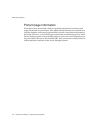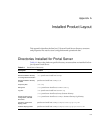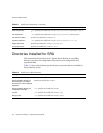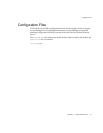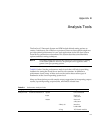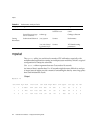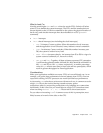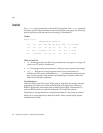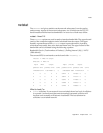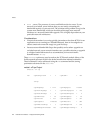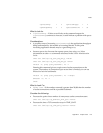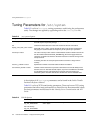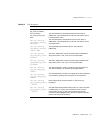mpstat
Appendix B Analysis Tools 145
What to Look For
Note the much higher
intr
and
ithr
values for certain CPUs. Solaris will select
some CPUs to handle the system interrupts. The CPUs and the number that are
chosen depend on the I/O devices attached to the system, the physical location of
the devices, and whether interrupts have been disabled on a CPU (
psradmin
command).
•
intr
- interrupts
•
intr
- thread interrupts (not including the clock interrupts)
❍
csw
- Voluntary Context switches. When this number slowly increases,
and the application is not IO bound, it may indicate a mutex contention.
❍
icsw
- Involuntary Context switches. When this number increases past
500, the system is under a heavy load.
❍ smtx - if smtx increases sharply. An increase from 50 to 500 is a sign of a
system resource bottleneck (ex., network or disk).
❍ Usr, sys and idl - Together, all three columns represent CPU saturation.
A well-tuned application under full load (0% idle) should be within 80% to
90% usr, and 20% to 10% sys times, respectively. A smaller percentage
value for sys reflects more time for user code and less preemption, which
result in greater throughput for Portal application.
Considerations
Make your application available to as many CPUs as it can efficiently use. As an
example, you get the best performance from one instance from 2 CPUs.You can
expect that creating 14 2CPU processor sets would yield the best performance.
An increasing csw value shows an increase with network use. A common cause for
a high csw value is the result of having created too many socket
connections--either by not pooling connections or by handling new connections
inefficiently. If this is the case you would also see a high TCP connection count
when executing netstat -a | wc –l. Please refer to the netstat section.
Do you observe increasing icsw? A common cause of this is preemption, most
likely because of an end of time slice on the CPU.




